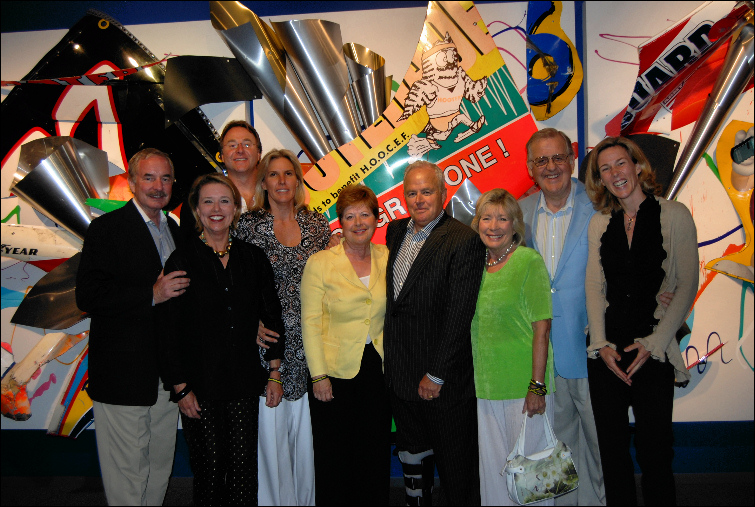In Memoriam: Steve Maloney (1942-2021)
Artist Steve Maloney championed the depiction of velocity, American icons, machine forms, Pop culture, and most significantly, the humor of life itself.
Steve Maloney died on February 23, aged 78. He was a loved and respected visual artist. His strength was to bring a sense of lightness to the most complex and challenging topics, including honoring Vietnam War veterans with a graffiti-painted helicopter that served in Vietnam.
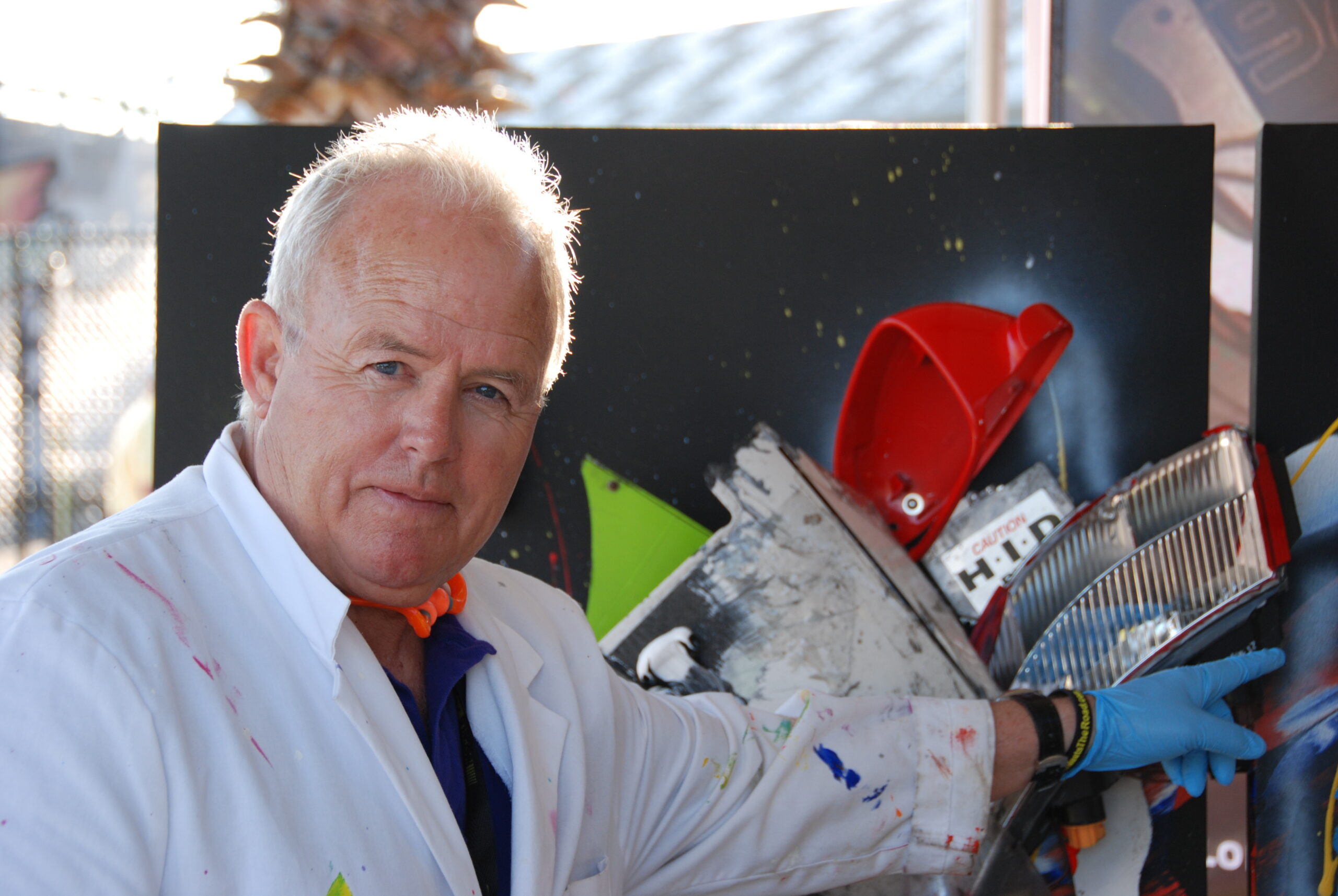
After making various careers in men’s fashion and machine tool engineering, Steve embarked on a third profession as an artist. It was in the early days of that pursuit that he and I first met in Manhattan. He was impeccably dressed in a three-piece suit and hat. Steve presented his ideas and asked if I could help him exhibit and publicize his work.
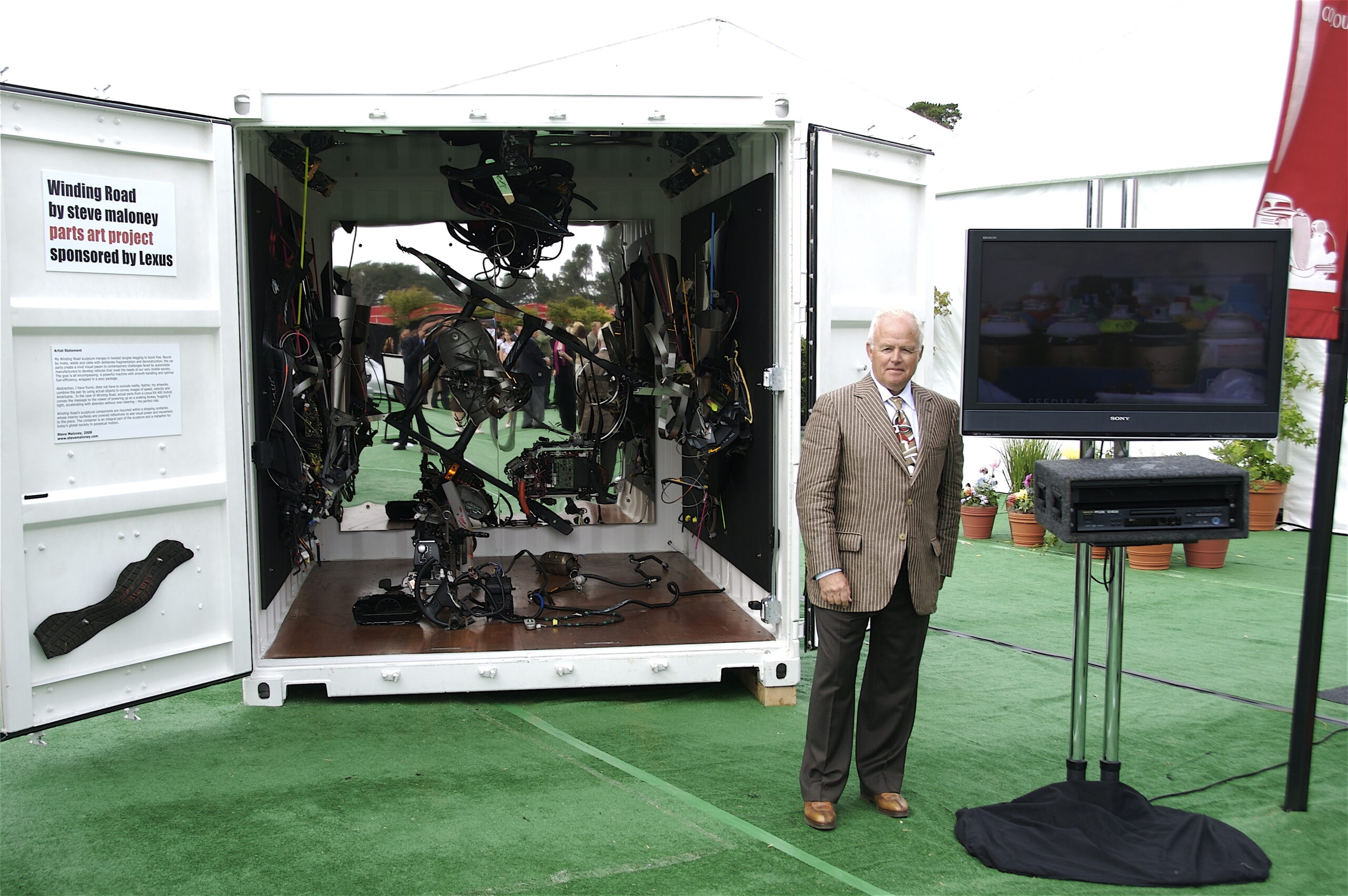
After some initial hesitation on my part, he explained that he had recently purchased a literal ton of items that had been confiscated by the Transportation Security Administration (TSA) not long after 9/11. Scissors, lighters, nail-clippers, sex toys, and even antlers were among the contraband, and he had used the haul to create a series of sculptural artworks called “Banned Booty.” He pulled out images and immediately had my attention. Steve had a spark, fantastic ideas, and a knack for catchy names. We started a working relationship that would last 18 years.
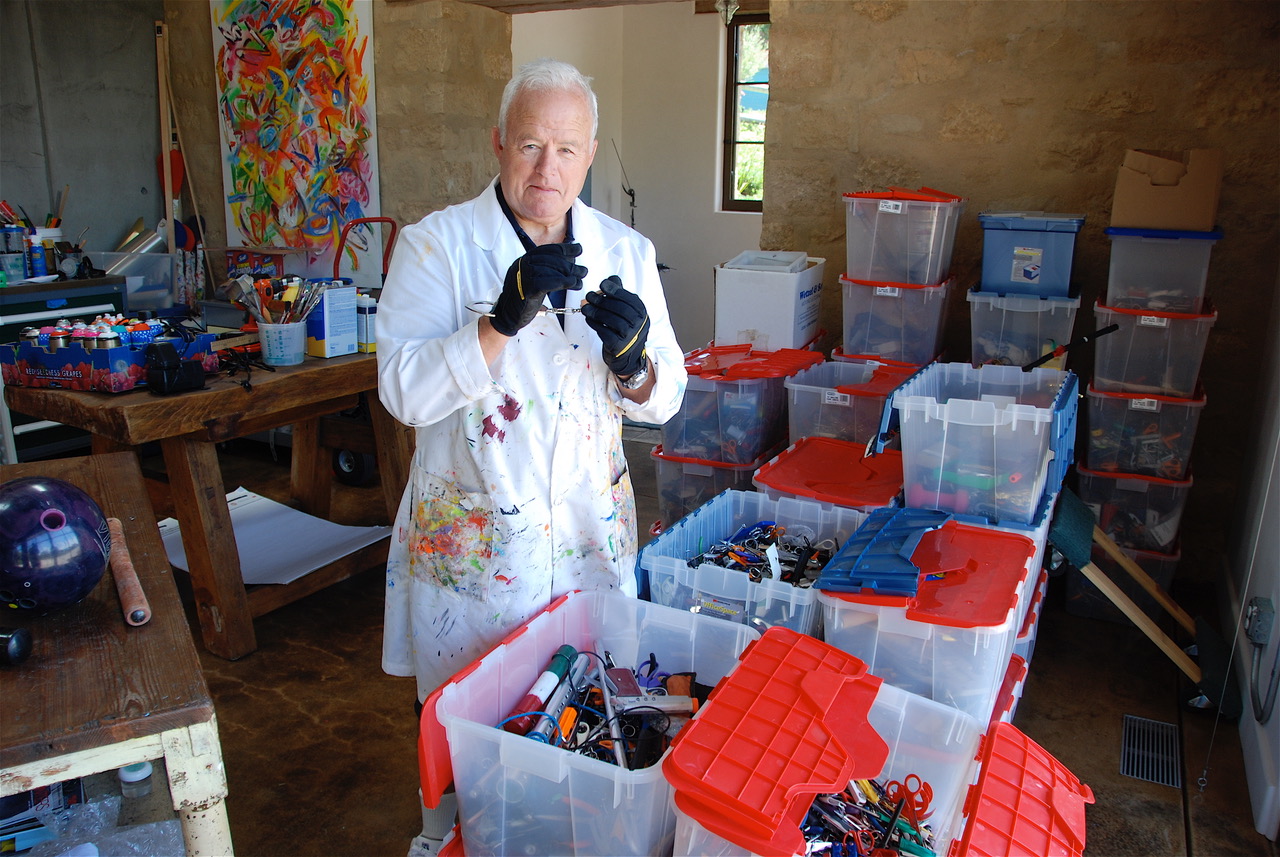
Banned Booty was such a success that a Wall Street Journal editor once commented: ”Steve Maloney has gotten more press than Monet!” While I’d like to take all the credit, it was always Steve who came up with fresh ideas, new ways to exhibit, and even acted or impersonated along with some of his artworks. This Is Where The Rubber Meets The Road captured the combustible energy and chaotic inevitability of Sunday afternoons at the racetrack, with Steve’s sculptural works of mixed media on board-backed canvases created from sheet metal and tire rubber from actual NASCAR racing cars. The art practically jumped from the wall in a twisted tangle, a vivid homage to the sport of auto racing.
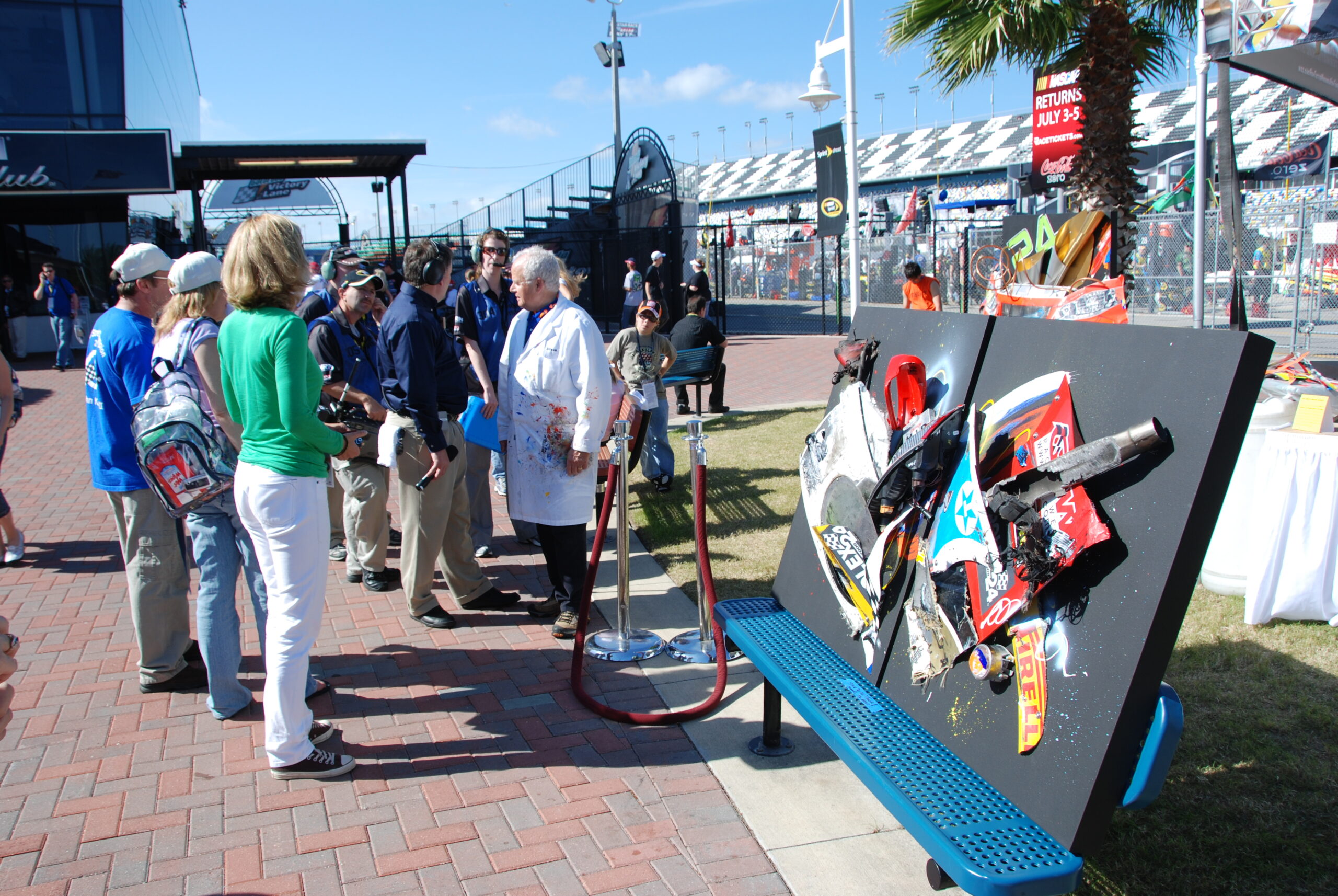
Working with Steve could be intense, but it never felt so because he was set on having a great time. Everyone in his orbit came along for the ride of catapulting his ideas and visions into the world at large. 1-800-Gadgets was a series of artworks he exhibited at a True Value hardware outlet in Palm Springs, with five Pop-painted, resin-covered nude mannequins lingering around the store’s usual barbeque display. Steve was in the midst of it all, with a wide grin across his face.
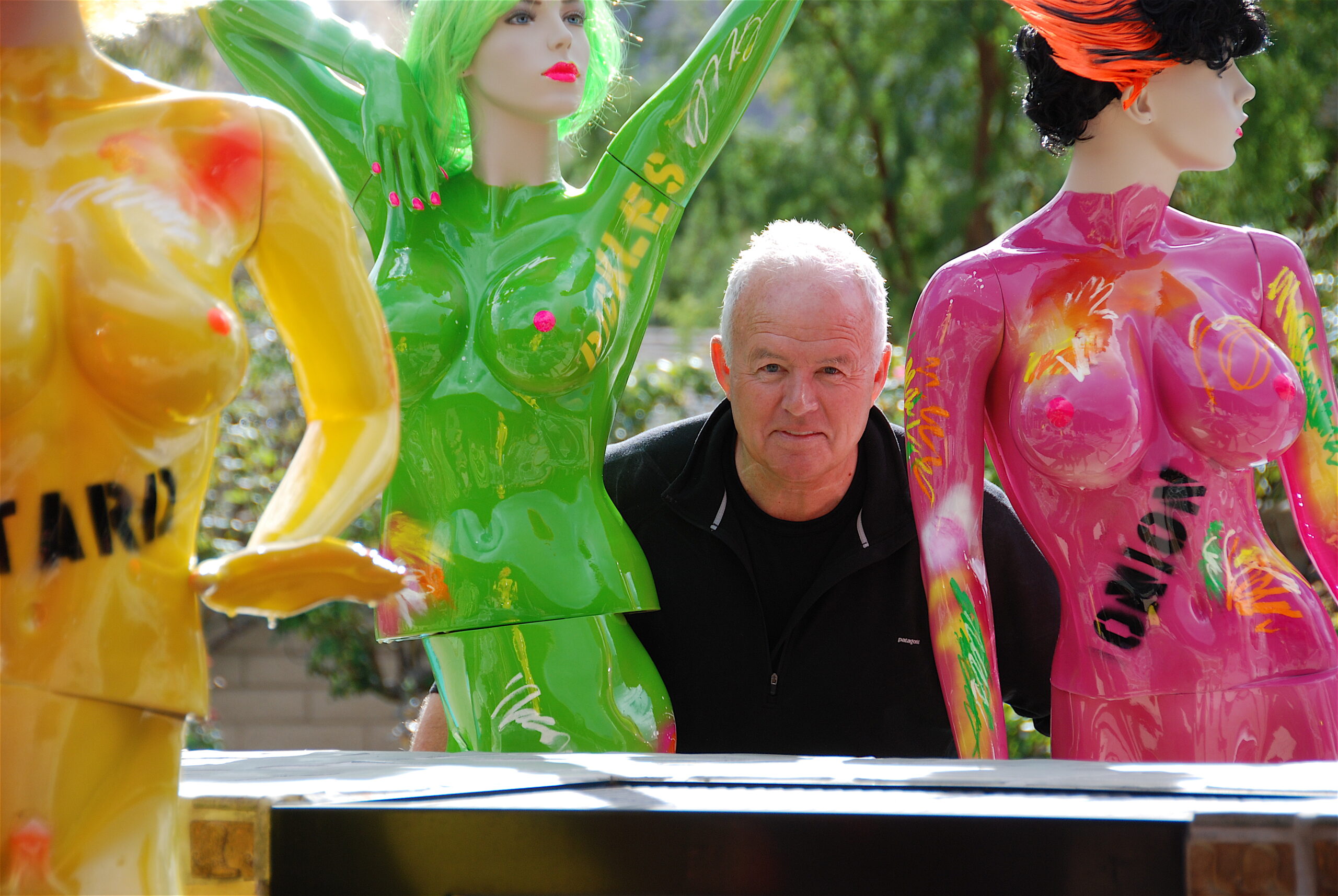
Steve’s last and most prominent work was Take Me Home Huey, with an actual helicopter as the initial canvas. At the heart of the project was a 47-foot Huey medevac helicopter that had been shot down in Vietnam on Valentine’s Day 1969, and transformed by Steve into a colorful ambassador of healing to heighten awareness of Post-Traumatic Stress. The artwork visited 29 sites around the country from 2015-2017, and it is now a permanent exhibit at the Palm Springs Air Museum. The late Senator John McCain contributed a book to the installation’s time capsule with an inscription thanking Steve for his work.
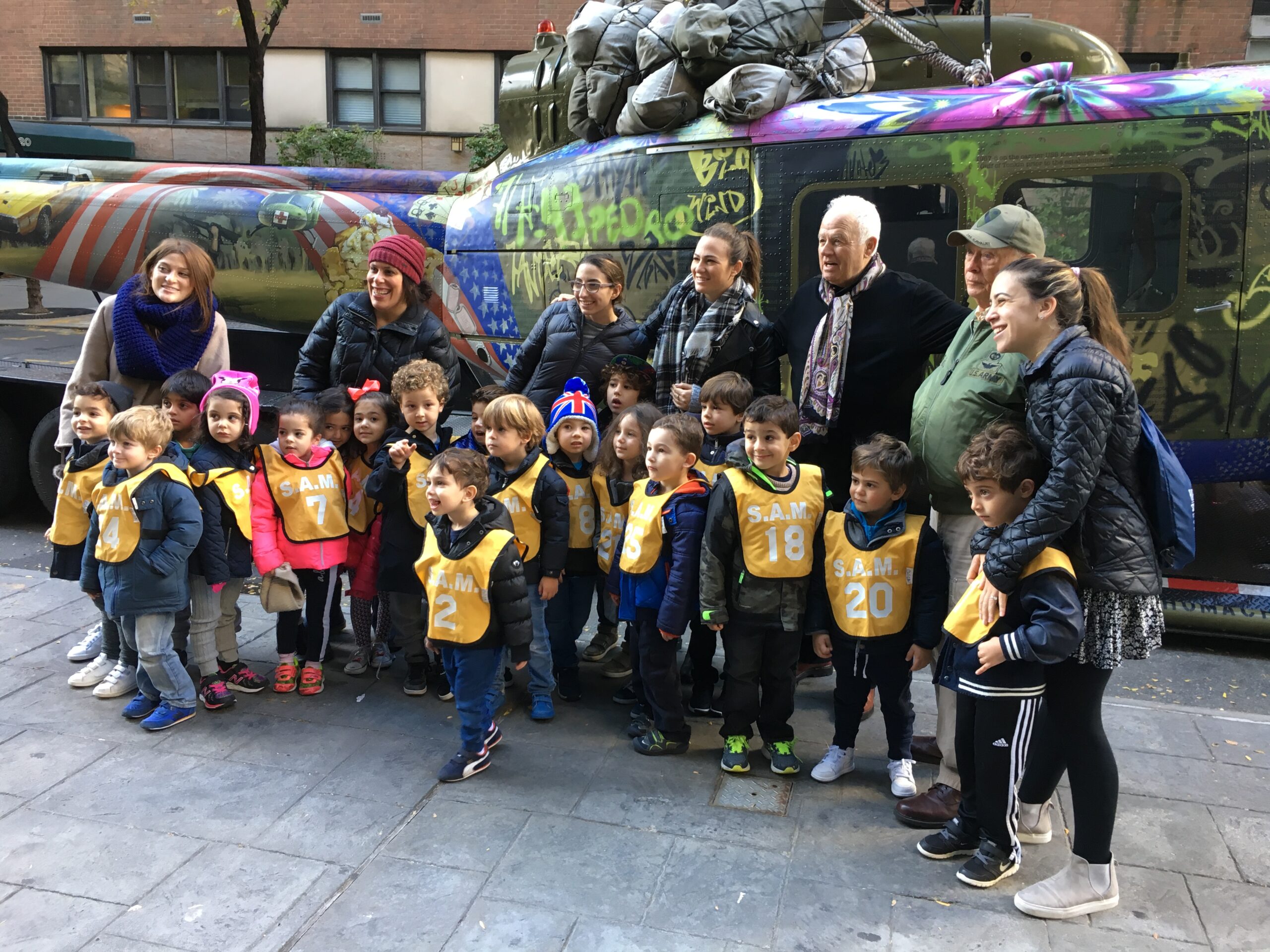
The helicopter sculpture was only the start of Take Me Home Huey, however. Steve went on to produce an eponymous, Emmy-winning 56-minute documentary film that chronicles the harrowing story of this Vietnam War Huey and the reuniting of surviving crew with the helicopter 46 years after it was downed in a jungle and repurposed into art. The singer and songwriter Jeanie Cunningham composed a song for the art project that reflects the music of the Vietnam era. A book chronicles the artwork and stories of those touched by it.

It’s tempting to add up the many successes of Steve’s art career, but in my opinion, the true genius of Steve Maloney was his fearless pursuit of creating what he loved. Steve pursued his passions with complete dedication, and those who supported him gave wings to his ideas. First and foremost, I want to include his wife Yvonne Maloney, who is also an incredible artist. She never flinched when helicopters were delivered to her husband’s art studio and his canvases increased in size over the years. Also, Stephen Zapantis, Steve’s long-time aid and studio director, who made the seemingly impossible happen again and again.

Steve Maloney will be missed by many as the creative artist that he was, but also as the friend he became.
—Andrea Schnoor
